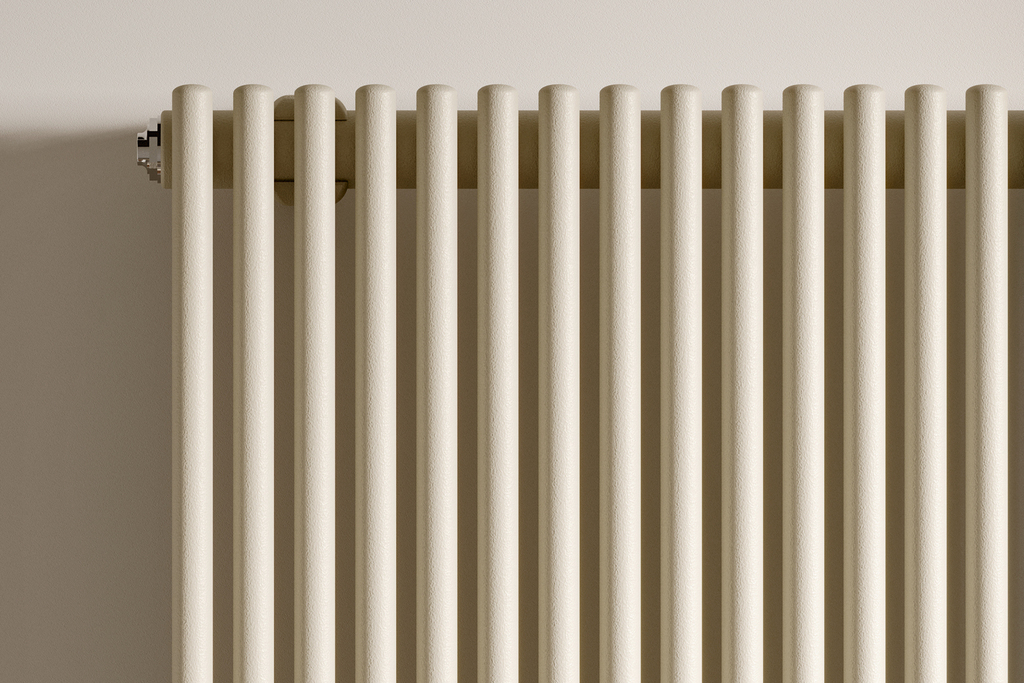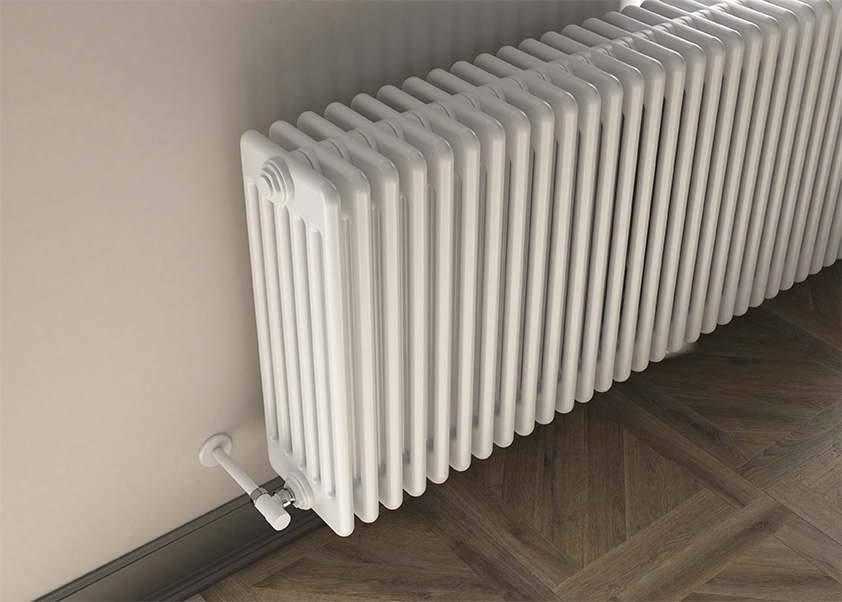Radiators are the tool that allows you to heat your home during the winter season. That is why it is important to understand radiators clearly: how they work, how to use them correctly, and how they are connected to the heating system. Let’s explore this together in this guide.
How do radiators work in your house?
Radiators are a component of the heating system, along with the boiler or heat pump. There are various types, but they all function similarly.
A radiator is a device that carries heat — that is, it transports the energy produced by the heat generator.
The process works by hot water flowing through the heating system pipes and reaching the radiators, which is why they’re often called hot-water radiators. They don’t produce heat but distribute it throughout the rooms in the house where they’re installed.
There are three types of radiators available on the market.
- Aluminium radiators: the fastest to heat up, ideal for smaller spaces.
- Steel radiators: they heat up almost as quickly as aluminium radiators and retain heat even when the boiler is off.
- Cast iron radiators: now a smaller market segment due to their age and heavier weight, making them harder to install.
When hot water reaches the radiator, the metal heats up and, at that point, releases the heat to the surrounding environment.
The water then cools and returns to the heat generator to be reheated, completing the operating cycle.
How does a radiator work step by step?
In detail, the principle by which hot water circulates in radiators follows several steps.
- In the first phase, the heat generator heats the water, bringing it to a high temperature.
- At this point, the hot water is pumped through a system of pipes that connects the generator to the installed radiators.
- This allows for heat exchange: once the hot water reaches the radiators, the heat is transmitted by convection and radiation to the surrounding air.
- The radiator warms up and transfers heat to the room, raising the temperature.
- After releasing some of its heat, the water cools down and returns to the boiler to be reheated, starting the cycle again.
The process of circulating hot water in the heating system pipes also takes into account two other factors: density and the circulation pump.
- Density: hot water is less dense than cold water, so it tends to rise, while cold water tends to fall.
- Circulation pump: it provides the necessary force for the water to move through the pipes and reach the radiators.

What are the two valves on a radiator for?
A valuable component that contributes to the functionality of a radiator is the thermostatic valve.
- The valve allows for the regulation of hot water flow within the radiator.
- This, in turn, controls the amount of heat the radiator distributes throughout the room.
- The regulation is carried out via the so-called thermostatic head, which has a graduated scale typically ranging from 0 to 5.
- When set to 0, the valve closes, and the radiator cools down; however, the thermostatic head still ensures a minimal flow to provide an antifreeze function.
- When set to 5, on the other hand, the valve is fully open, and the radiator operates at maximum power.
The thermostatic valve thus allows users to set the desired temperature for a room based on its use and the time of day, helping to avoid energy waste, which impacts the final utility bill.
Thermostatic valves can be either manual or smart. In the first case, the user must adjust the valve knob directly, while in the second, a home automation system can take over, utilising various features to help save energy and reduce related costs.
- For example, a smart valve may be equipped with sensors that detect if a window in the room is open: at that point, it stops the flow of hot water to that radiator, while heating continues in the remaining rooms.
- The user can also remotely control the operation of the radiators, setting the temperature for different areas of the home, as smart valves are connected to the internet, allowing interaction with a simple click on a smartphone.
- This makes it easier to reach and maintain the ideal temperature level in winter with reduced energy consumption.

How to turn on radiators at home
When discussing radiators and their operation, it is essential to consider the type of heating system they are connected to. This system can be either independent or centralised, with different methods for activating the radiators.
- In the case of an independent system, once the heat generator is on and the thermostatic valves are open, the radiators start working.
- For centralised systems, you must wait for the heating period established by municipal regulations to enjoy the heat from the radiators, as is common in apartment buildings.
The radiator activation process includes a device such as a thermostat.
- It monitors the temperature inside the home.
- It allows you to set the desired temperature and control the heating system’s on and off times.
For example, if the thermostat detects that the room temperature is below the set level, it activates the heating system so that hot water flows into the radiators.
Like thermostatic valves, modern thermostats are designed to offer smart solutions. Home automation technology enables continuous interaction with the user, who receives real-time information on their smartphone about the system’s operation and air quality, as smart thermostats can also detect humidity levels.
In addition to technological solutions, regular maintenance and cleaning of the radiators are crucial, along with a few simple tips to avoid unpleasant surprises when turning on the radiators, especially after they have been off for a long time.
For instance, radiators may not heat evenly or may make strange noises when turned on. This could be due to air bubbles inside them. To remove these, simply open the radiator’s bleed valve for a few seconds until a steady flow of water comes out, then close it again.









































